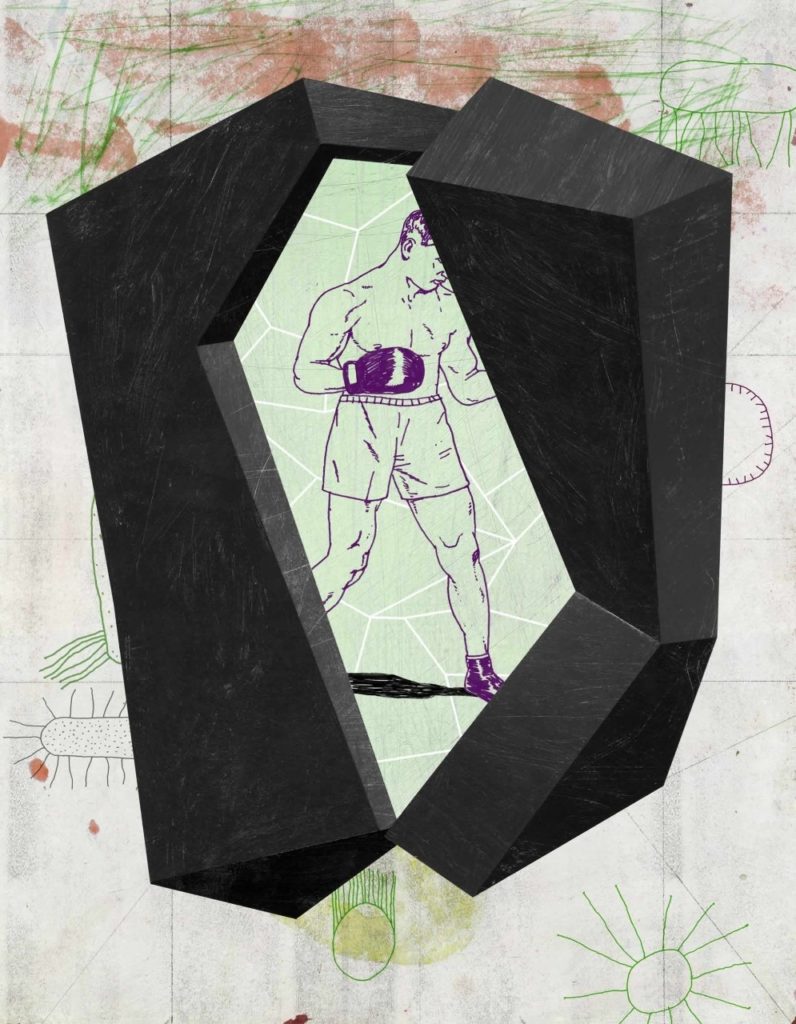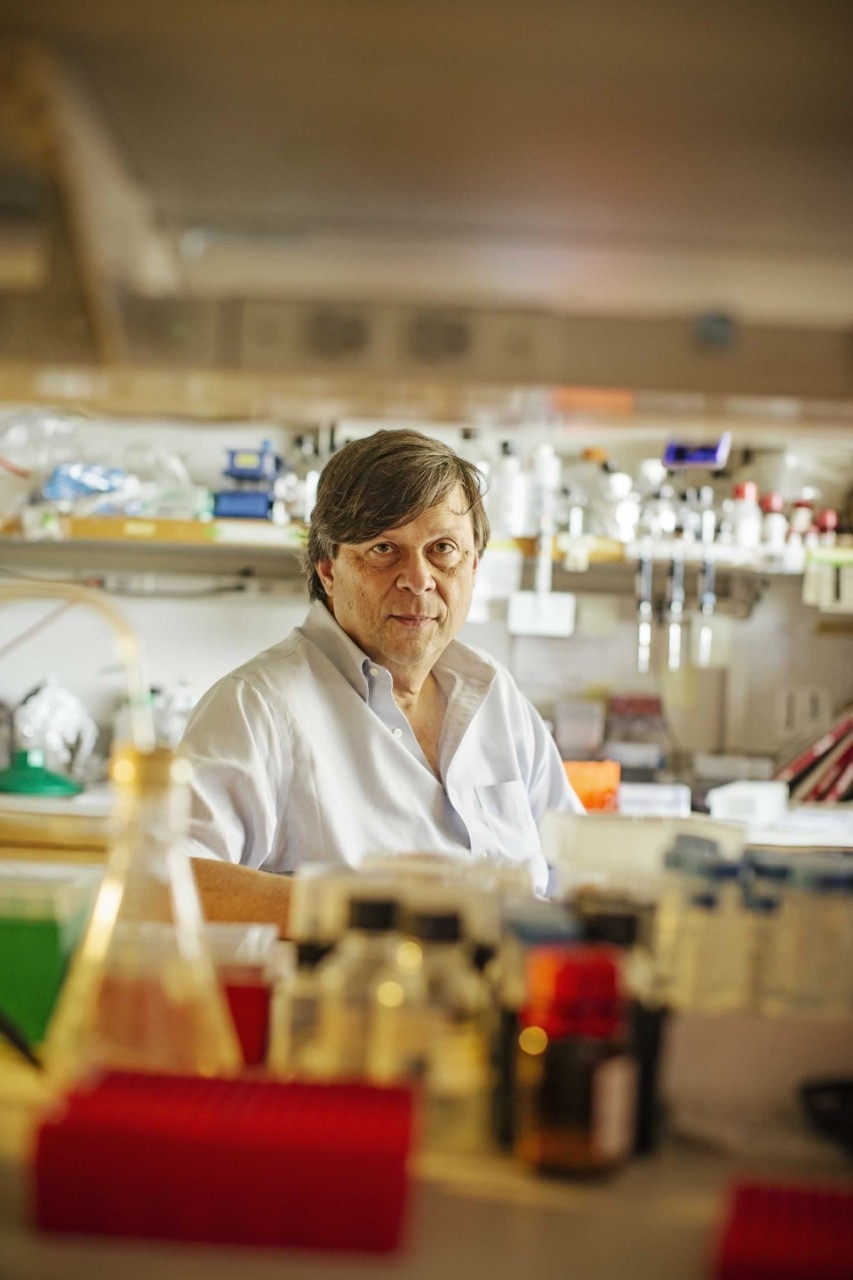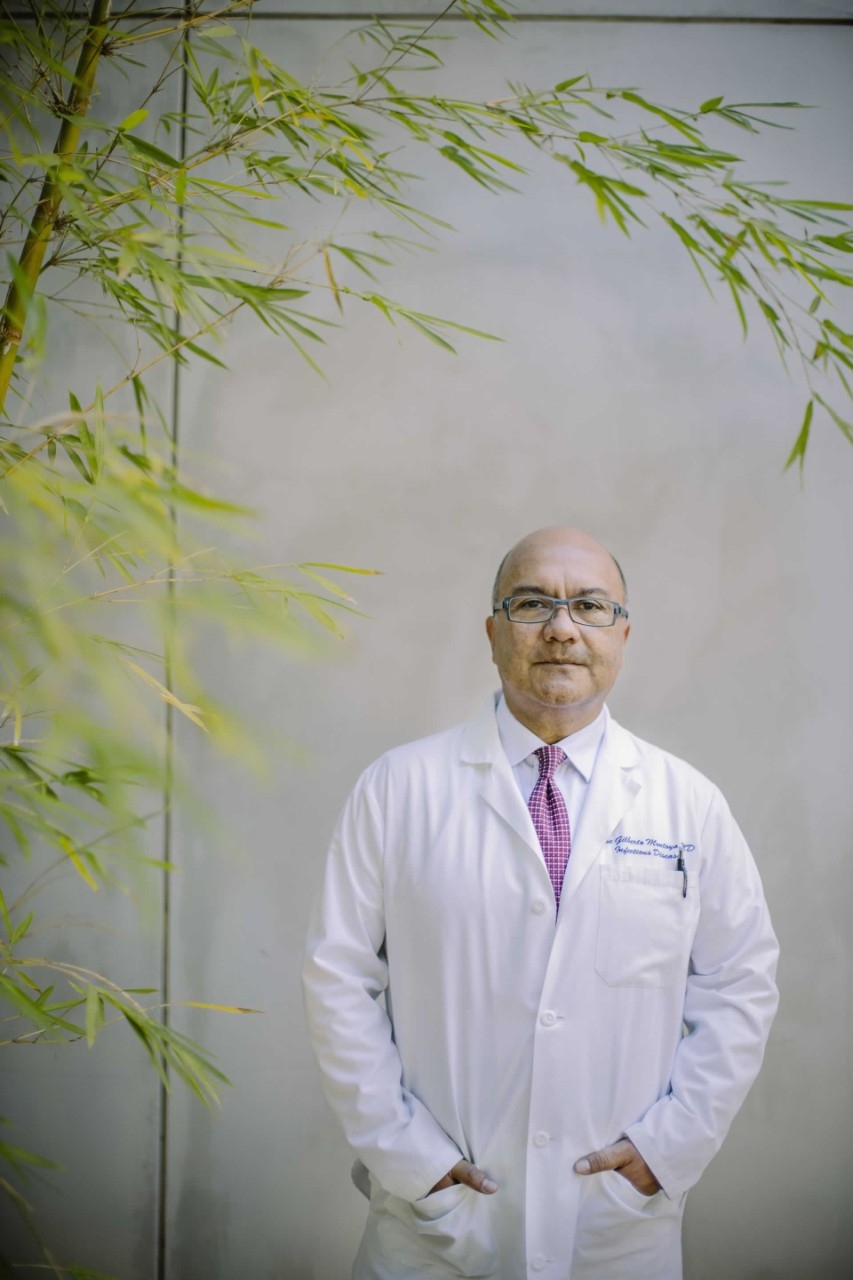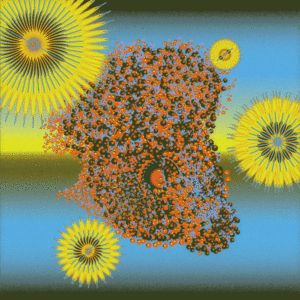Immune system disruption
The search for answers

Erin keeps a photo of herself playing soccer in the living room of her tidy cottage near San Francisco Bay. It captures her image frozen in time and space, hurtling like a comet between two opponents, her white-blond ponytail fanned out like flames.
“She was a midfielder with boundless energy, lightning fast,” recalls the coach of her Big Ten college soccer team.
Erin, in her early 30s, always assumed that soccer would be at the center of her life. As a little girl, her favorite toy was a soccer ball, a present from a cousin living in Rome. At age 4, she drew a picture of herself competing in the Olympics. In high school, she was invited to try out for the national team’s talent pool. After college, she played for the Detroit Jaguars, a semi-professional team.
But her dream of playing competitive soccer abruptly ended after a trip to Mexico in 2007.
“I was doing social work at an orphanage when I got sick,” says Erin (who asked that her real name not be used). “I passed out and was hospitalized with a high fever, low blood pressure and swollen lymph nodes. After that, I was never the same.”
Thus began her seven-year journey battling a devastating illness with no known cause or cure. She was bedridden for all but four hours a day. She could stand only for 20 minutes without fainting. But the worst symptom was the brain fog.
“It was like my thoughts were stuck in molasses,” says Erin.
No one could figure out what was wrong or how to fix it. She was labeled with chronic fatigue syndrome. Despair set in as the door to her old life slowly closed.
Interrogating the immune system
That same year a door opened on the other end of San Francisco Bay, in a windowless basement of a clinical research building at Stanford University. Here Mark Davis, PhD, an immunologist with a computer hacker’s mindset, was launching a center that aimed to break open the black box called the human immune system.
This dynamic network of biological sensors, cells, secretions and genes is like a sixth sense, able to detect microbial friend from foe in the food we eat, the things we touch and the air we breathe. The most intelligent facets of the immune system are still a mystery. How does it differentiate between the cells that are part of you and the interlopers?
What are the steps involved in launching an army of white blood cells to attack a microbial invader? How does the system dial down the resulting tissue-damaging inflammation? How do our traitorous cells — the cancers — make themselves invisible to our immune system?
Davis, director of Stanford’s Institute for Immunology, Transplantation and Infection, is in the right place at the right time for this quest, swimming in the primordial soup of creative disruption, Silicon Valley. At long Stanford cafeteria tables frequented by geneticists, bioengineers, math geniuses, computer programmers, surgeons and cancer biologists, ideas just happen. And sometimes, visionary entrepreneurs throw money at these ideas.
Such is the case with Davis’ Human Immune Monitoring Center, which before long had enough funding to acquire a CyTOF, a time-of-flight mass spectrometer for high-speed acquisition of multiparametric single-cell data. (If someone asks you if you want one of these instruments, just say yes.)
The CyTOF enables researchers to detect 40 different components within a single cell at the rate of 1,000 cells per second. It not only measures static levels of proteins, useful in identifying different types of immune cells, but it also detects minute changes in signaling proteins within cells in response to various stimuli.
Using this device, a staggering amount of data is generated. And armed with big-data analytical methods developed during the Human Genome Project, Davis’ multidisciplinary team is trying to bring order and meaning to the output.
When it’s all done, the team hopes to create a map of what a healthy person’s immune system should look like and a flow chart depicting how immune-system signaling pathways work.
The ultimate goal of Davis’ “Human Immunome Project” is to develop better tools to answer immunological questions no one can answer now. One of the first: What is wrong with the immune systems of patients like Erin, and how can we help them get better?

Two years into her illness, Erin was broken. On any given day, she would cycle through a laundry list of symptoms: brain fog, dizziness, light sensitivity, a sore throat, nausea, swollen lymph nodes, crushing fatigue, a racing heart, ear ringing, drenching sweats and fainting.
During this time, she had lost some of her most active and athletic friends, who grew impatient with the waxing and waning symptoms that prevented her from the leaving the house on most days.
“I had times where I’d shut the blinds, lie down and hope for a better day,” says Erin. “Literally, my escape was through my dreams. I just couldn’t stand to be in my body.”
Her life revolved around doctors’ appointments. One physician ruled out infectious diseases. Neurologists examined her for seizure disorders and brain tumors. A rheumatologist evaluated her for systemic lupus erythematosus and other inflammatory diseases. An endocrinologist agreed that the origin of her fatigue was not the thyroid, the adrenals or any other gland. A cardiologist assured her it was not her heart.
None of them could settle on a definitive diagnosis, so the physicians tagged her with the insurance code for chronic fatigue syndrome, a controversial diagnosis for a set of symptoms also sometimes labeled as CFIDS — for chronic fatigue and immune dysfunction syndrome — and ME — for myalgic encephalomyelitis. The dominant moniker today is ME/CFS.
No one knows what causes ME/CFS. Some think that an infectious agent or overactive immune system triggers it. Others blame genetic flaws, environmental factors or a combination of any of the above.
Roughly 17 million people worldwide (1 million to 4 million in the United States) have ME/CFS. It strikes people of all ages and racial, ethnic and socioeconomic groups. It is diagnosed two to four times more often in women than men.
It’s a syndrome that gets little respect in the medical community because, with no tangible cause and an ever-changing constellation of symptoms, patients often get labeled as hypochondriacs, malingerers or seekers of addictive pain medications. The primary diagnostic criterion for this condition is infuriatingly vague — “six or more consecutive months of severe fatigue” — virtually unchanged since 1994.
As Erin went from specialist to specialist, well-meaning doctors grew frustrated with their inability to help her. One day Erin blacked out while driving, almost hitting a streetlight. After another fainting accident, an emergency room physician told her, “On hot days, women faint.”
“I felt objectified, like a slab of meat,” says Erin.
Finally, in 2009 Erin was diagnosed with postural orthostatic tachycardia syndrome — which accounted for her fainting spells. For treatment, her cardiologist sent her to Stanford Hospital’s cardiology clinic to see one of the nation’s few POTS specialists, cardiac electrophysiologist Karen Friday, MD.
POTS, which often accompanies ME/CFS, is a fainting disorder associated with an abnormal increase in heart rate and low blood pressure. The mechanism is unknown, but some people develop it after contracting viral or bacterial infections like mononucleosis, pneumonia or Lyme disease. Friday prescribed fludrocortisone to manage Erin’s low blood pressure, but to explore the possibility of an underlying microbial trigger, she sent Erin to see Stanford professor of infectious diseases José Montoya, MD.
Montoya, 54, dapper in his white coat and tie and smiling widely, greeted Erin with a bear hug and told her in his thick Colombian accent, “I want to make your life beautiful again.”
“Dr. Montoya was a shining beacon of hope,” says Erin.
Montoya’s ethos to reduce patient suffering was shaped by a hardworking, single mother and the iron-fisted priests at his Catholic school in Cali, Colombia. He was accepted into medical school at age 18, after receiving the third-highest qualifying exam score in his native country that year. After medical school he went on to Tulane University School of Medicine for his residency, then joined the infectious disease division at Stanford. At Stanford he became a world-recognized authority on infections affecting heart transplant recipients and on toxoplasmosis, a common parasitic disease.
Montoya conducted a detailed medical history and physical exam on Erin, then ordered a battery of tests for viruses, bacteria and fungi. His wide-net diagnostic approach paid off; he found two blood-borne microbes — Human Herpesvirus-4 and the coxsackie virus — known to cause chronic disease and POTS.
Though Montoya wasn’t sure if these viruses were at the root of Erin’s illness or merely collateral infections, he started her on a high dose of the antiviral drug famciclovir. Erin was relieved to finally have a physician who wasn’t going to punt her case to another specialist.
“I wanted to live my life again,” says Erin.
Montoya is one of only a handful of clinician-researchers who accept ME/CFS patients, and he currently has a waiting list of about 150.
Back in 2005, while attending a conference on toxoplasmosis in Paris, Montoya told his mentor that he wanted to research ME/CFS. His mentor scoffed at the idea, pointing to a homeless person lying in a Parisian gutter.
“That’s going to be you if you go into chronic fatigue research,” the mentor told him.
The hard truth is that most medical research labs rely in large part on U.S. government funding, and the ME/CFS research budget is insufficient to support a typical university research lab.
The National Institutes of Health, the largest funder of medical research in the United States, allocated only $5 million for ME/CFS research in 2013. (To put this in context, the annual NIH research budget for multiple sclerosis, with 400,000 sufferers, is $112 million.) The reasons behind this underfunding are complicated.
One factor is that the NIH funding process favors well-defined diseases that fit neatly into medical specialties like cardiology, cancer and neurology. Most of these medical societies have organized lobbying efforts, sometimes backed by pharmaceutical or medical technology companies. Another factor is that collectively ME/CFS patients are too sick to organize, raise money and lobby for research dollars. And then there is the stigma associated with the condition; some NIH grant reviewers are reluctant to fund research because they believe that ME/CFS is a psychosomatic, “all in the head,” disorder. (To remedy this, the NIH recently created a special emphasis panel so that researchers familiar with the condition review grant applications.)
But none of this deterred Montoya, who was driven to do something for the suffering patients queuing up for appointments.
Opportunity knocked in 2008 when a wealthy donor met with Montoya to talk about the ME/CFS problem. He asked if a $5 million donation for research could make a difference.
Montoya could hardly believe the sum, replying, “Yes, give me five years.”
With the freedom of private funding, Montoya was able to take a multifaceted and rigorous approach to analyzing ME/CFS. Traditionally, NIH funding is awarded through medical specialty groups that tend to favor research that tests one narrow hypothesis about a disease. For example, a researcher might get funded to screen blood samples for one virus, or treat patients with one drug. This approach takes a long time, and researchers typically aren’t able to share and build on discoveries for years.
Montoya’s game plan was to use a big-picture, big-data strategy to find out what was wrong with patients like Erin. His first step in launching the Stanford Initiative on Infection-Associated Chronic Diseases was to convince a dozen or so academic investigators to venture out of their comfort zones to research a wildly unpopular disease using technologies yet to be developed.
Montoya convinced experts in immunology, rheumatology, genetics, bioengineering, anesthesiology, neuroradiology, cardiology, psychiatry, infectious diseases and bioinformatics to all work together. The team members would be searching blood samples for infectious microbes, inflammation-related molecules and genetic flaws.
They’d do brain scans and physical exams. They’d survey study subjects for fatigue levels and medical histories. Then they’d compare all this data with that of healthy people to see what was different. Next, he launched a Bay Area recruitment campaign for 200 patients who met the Centers for Disease Control’s definition for chronic fatigue syndrome, including Erin, and 400 age- and sex-matched healthy volunteers, all of whom agreed to donate eight tubes of blood and be poked, scanned and surveyed over the next decade.
The most complex part of the ME/CFS initiative was the exploration into what was happening with the immune system of these patients. For this role, he needed an expert who didn’t care about the ME/CFS stigma or how things have been done in the past. So he called on Mark Davis.
There will be blood
Davis, in well-worn jeans and running shoes, leans back in his chair, surrounded by pillar-piles of scientific papers. At first glance one might assume that he is — in California-speak — a mellow dude.
But looks can be deceiving, because Davis, who discovered how T cells help a body fight off infections, is all about the fight.
As if to prove this point, Davis reaches into a random stack of paper and pulls out a black-and-white photo of a collegiate fencing match.
“This is me,” he says, pointing to a man in white flying off the ground, plunging the tip of a silver foil directly between the eyes of a masked opponent. “I like to poke people.”
He then reaches into another stack of paper and pulls out the Dec. 19, 2008, issue of Immunity. It is a poke-in-the-eye to fellow immunologists, an essay titled, “A Prescription for Human Immunology.”
In this oft-quoted paper, he describes immunology as a field known for its “impenetrable jargon, byzantine complexity and acrimonious disputes.”
He also chides many of his colleagues for spending too much time on mouse studies and not enough on human studies. For immunological studies, mice are fast and easy. They can be bred with specific diseases, such as diabetes or Parkinson’s, and then dissected to evaluate the effectiveness of experimental treatments. There are relatively few regulatory, financial and ethical hurdles to working with mice. He emphasizes that lab mice live in isolated, disease-free, temperature-controlled environments, far different from the crowded, germ-ridden urban habitats of your typical Homo sapiens. (Most humans are infected with six different herpes viruses, and who knows what else.) The other problem with “mouse models” is that their common ancestors are genetically separated from Homo sapiens by some 65 million years.

“Inbred mice have not, in most cases, been a reliable guide for developing treatments for human immunological diseases,” says Davis.
Instead, he would like to shift the focus of immunology research back to where it can do the most good — to humans and their blood. And along the way, he’d like to slay a few sacred cows of medicine.
First off, Davis believes it’s time to rethink the CBC or complete blood count, the most commonly ordered medical test on the planet. The CBC, which has changed little since it was put into mainstream use in the ’50s, provides physicians with relative numbers of a patient’s red, white and platelet blood cells. This test isn’t really “complete” and it doesn’t begin to capture the nuances of a working immune system.
As researchers gain a better understanding of this system, he’d like to develop a new set of metrics for immune system health that communicates more of a continuum of health rather than a black-and-white declaration. If the immune system is underactive, a person is open to infections, mutations and premature aging. If it is overactive, a person may suffer from allergies, autoimmune disease and excessive inflammation. Davis wants to redefine health as an immune system in balance, then develop better reporting tools to help clinicians determine if a patient is fighting a virus, a bacteria, an allergy or environmental toxins.
Davis’ field of dreams for this effort is Stanford’s Human Immune Monitoring Center. Launched in 2007, today the center consists of dozens of instruments that provide standardized, state-of-the-art immune system analysis at the RNA, protein and cellular levels. Its gene-sequencing instrumentation is located in a nearby building and shared with the Stanford Functional Genomics Facility. For researchers both inside and outside of the university, the center’s 15-person staff provides a one-stop shop for these services. At the start of a project, the center’s director, Holden Maecker, PhD, meets with investigators to help plan studies and determine needs, such as what samples to take, how to store those samples and which tests will best answer their scientific questions. There is also assistance on results archiving, reporting and data mining.
“We have about 60 different projects under way at the center right now,” says Maecker. These include searches for immune biomarkers for aging, Alzheimer’s, autoimmune disease, cancer, chronic pain, rejection in organ transplantation and viral infections.
“I believe this is the only facility of its kind anywhere,” says Davis.
Montoya’s chronic illness initiative is the largest project in the HIMC at this time, and the complexity of the task ahead is daunting. The staff is looking for meaningful patterns in the many components of the 600 blood samples, including dozens of cytokines, 35 cell-surface proteins, 15 or so types of blood cells, and more than 47,000 genes and regulatory nucleic acids. The challenge is not only to quantify the normal ranges for these components, but also to understand relationships between the components and reverse-engineer the cascade of biochemical reactions that drive immune system processes. He anticipates it will take about a year to run all 600 samples through the processes.
“It’s like dumping a hundred different puzzles on the floor and trying to find two pieces that fit,” says Davis.
The workhorses for these tasks are the center’s two CyTOFs. Stanford has seven of these $630,000 instruments, more than any other academic medical center, thanks to Garry Nolan, PhD, a Stanford professor of microbiology and immunology. Nolan purchased the first commercially available CyTOF, and as an early adopter developed protocols for using it in cancer biology, immunology and cell biology. He now holds equity in Fluidigm, a company that manufactures the machines.

His enthusiasm for the technology and his willingness to share what he’s learned has catalyzed an active Stanford community of CyTOF experts.
“With seven CyTOFs on campus, Stanford continues to innovate and lead the way in ‘deep-profiling’ studies of the immune system,” says Nolan
Through this work, the Stanford team hopes to gain a better understanding of the complex, inner workings of the immune system. This will ultimately give physicians and their patients the tools to answer the fundamental question, “How is my immune system doing today?”
Putting the pieces together
This past March, four years after the launch of the ME/CFS initiative, Montoya held an all-day symposium to present early findings on what’s happening within the hearts, blood, brains and genomes of ME/CFS patients. The lecture hall was packed with researchers from Australia, Canada, the United Kingdom and the United States, as well as patients, all eager for any news on a research agenda that had been stalled for decades.
(These presentations can be watched at http://mecfs.stanford.edu/2014SymposiumVideo.html.)
At the end of the day, the biggest news was the identification of a number of biological markers that indicate ME/CFS patients may be suffering from out-of-control inflammation.
First up was a neuroinflammation researcher, Jarred Younger, PhD, who worked with the HIMC to measure daily fluctuations of 74 blood markers and cytokines. For this study, published in the Journal of Translational Medicine (http://www.translational-medicine.com/content/11/1/93), volunteers gave blood once a day for 25 days, and reported their fatigue levels on a hand-held computer twice a day. (Younger moved to the University of Alabama in Birmingham in August.) Through complex statistical analysis, the team found 12 cytokines that were consistently elevated on days that ME/CFS patients felt the most fatigued. One of these cytokines, leptin, activates microglial cells, the brain’s first line of defense against infections. When microglial cells are primed, they start pumping out signaling chemicals that generate the flulike symptoms commonly reported by ME/CFS patients — fatigue, headaches and brain fog.
Amit Kaushal, a medical resident with a PhD in bioinformatics, did the first pass on genomic analysis. For his part of the investigation, he scanned the blood of 200 ME/CFS patients and 400 healthy subjects for 47,000 gene elements, then ran this data through the Nextbio Disease Atlas, a publically accessible database that catalogs gene markers associated with specific diseases. After analysis, he found genetic markers in the blood of ME/CFS patients similar to those in patients with well-defined chronic inflammatory diseases.
The quarterback for the search for infectious microbes is W. Ian Lipkin, MD, a renowned microbe hunter and the director of the Center for Infection and Immunity at Columbia University’s Mailman School of Public Health. He is using high-throughput sequencing platforms that enable rapid identification and molecular characterization of known and novel disease agents.
“We decided to go in without any preconceived notions about what we’d find,” says Lipkin. “Our approach is comprehensive, rigorous and quite deep.”
In the first analysis, his team found no significant differences in the types of infectious organisms present in the blood of people with ME/CFS or their matched normal controls. In the next phase he’ll search inside the blood cells and analyze the gastrointestinal microbiome for the presence of bacteria or viruses that may trigger the immunological disturbances that are so disabling in ME/CFS. The objective of this work is to identify the agents responsible for initiating and perpetuating disease. This could lead to vaccines, drugs or probiotic interventions.
While not all of these results have been published or independently confirmed, the researchers were excited about finding measurable, physical differences between ME/CFS patients and healthy controls. (Stanford assistant professor of radiology Michael Zeineh, MD, has identified structural brain abnormalities in the ME/CFS patients — findings are slated for publication in the coming months.) More pieces of the puzzle are coming together, providing other ME/CFS researchers with ideas to build on. For ME/CFS patients it was validation — their symptoms are real, with measurable biological markers.
Eight months after seeing Montoya, Erin’s recovery from ME/CFS started with fleeting windows of cognitive clarity. She was on high-dose antivirals and POTS medications for about five years, and her recovery was infuriatingly slow and inconsistent. It was like wiping off a mirror in a steamy bathroom. She saw her former self briefly, then the image fogged over again.
Montoya doesn’t know why these drugs worked for Erin, but he knew from treating other patients that beating back viral infections sometimes helps get an immune system back into balance.
Erin also believes that the antiviral and POTS drugs were instrumental in her recovery, but other factors — family support, meditation and Montoya’s coaching — were also important.
One of Montoya’s key messages to ME/CFS patients is this: If you have one good day, don’t try to make up for lost time by overexerting yourself.
“Don’t burn out your engine,” says Montoya, because the resulting crash can reset the recovery process by months.
And at appointments he would remind Erin, “Take in all the love that is all around you and use it to heal.”
During her illness, Erin’s mother became her advocate, managing her medical issues and driving her to appointments. Her father added her to his health insurance policy so she could afford the visits to medical specialists. And her sister, who is her best friend and housemate, was her wingman.
“My sister was my voice of hope,” says Erin. “She’d tell me, ‘OK, you took five steps forward and two back today, but maybe tomorrow you’ll take six steps forward and only one back.’”
It’s been seven years since Erin fell into the abyss of a mysterious illness. This girl interrupted, now a woman, is picking up the pieces of her life and starting to live again.
Today, she works as a social worker and therapist. She plays soccer in a local league. She’s also started dating again. It gives her hope that researchers are finally focused on ME/CFS and that others may be able to benefit from the treatment that has given her life back.
As she packs for a camping trip, she reflects on how this illness has changed her.
“It’s made me a person of more depth and compassion,” says Erin. “Before, I’d been so active, I didn’t have the opportunity to sit with myself in this way and take a deeper inward journey. Adventure had been the focus of my life. As I sit with clients who are coming in with devastating situations, with unknown futures, I’m able to share with them hope and the power of self-fulfilling prophesies. I help them find those things inside, spiritually, that will help them meet the adversities in their lives.”
At this point her voice becomes soft, almost a whisper, as she says, “I’ll always miss playing soccer at a competitive level, but I’ve gained so much. It’s helped me reinterpret what success looks like. It’s not everything you achieve and how many games you win. It’s the process of getting there. This is my biggest achievement — recovering from this illness.”
In soccer, a “hat trick” is where a player scores three goals in a row. Montoya achieved his first goal, the launch of the first major ME/CFS research initiative, with a little funding luck and the recruitment of a top-notch research team. With the assistance of Davis and his immune system hackers, he’s close to reaching his second goal: the identification of biomarkers and causes, which will enable physicians to provide a definitive diagnosis and treatment options to patients suffering from this debilitating condition.
The third goal of his hoped-for hat trick will be a whole new way to look at the human immune system. It’s a game changer. It will provide researchers with a new playbook of research strategies to help them discover the causes of other confounding conditions, from Lyme disease to multiple sclerosis to fibromyalgia. It will provide clinicians with a better set of metrics for assessing patients’ health. And then the patients lying in dark rooms with forgotten diseases, whose numbers could fill hundreds of soccer stadiums, will have reasons to stand up and cheer.

